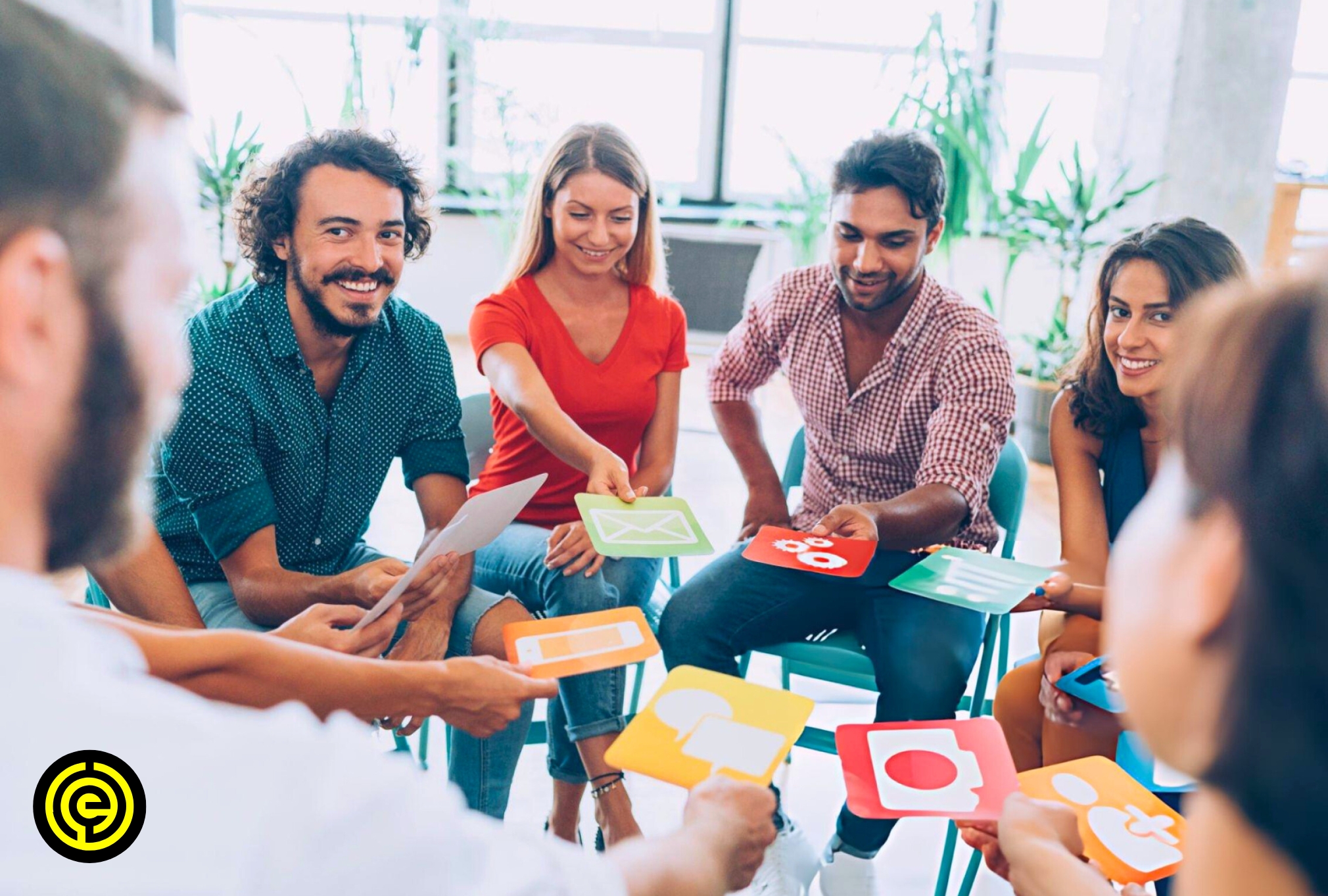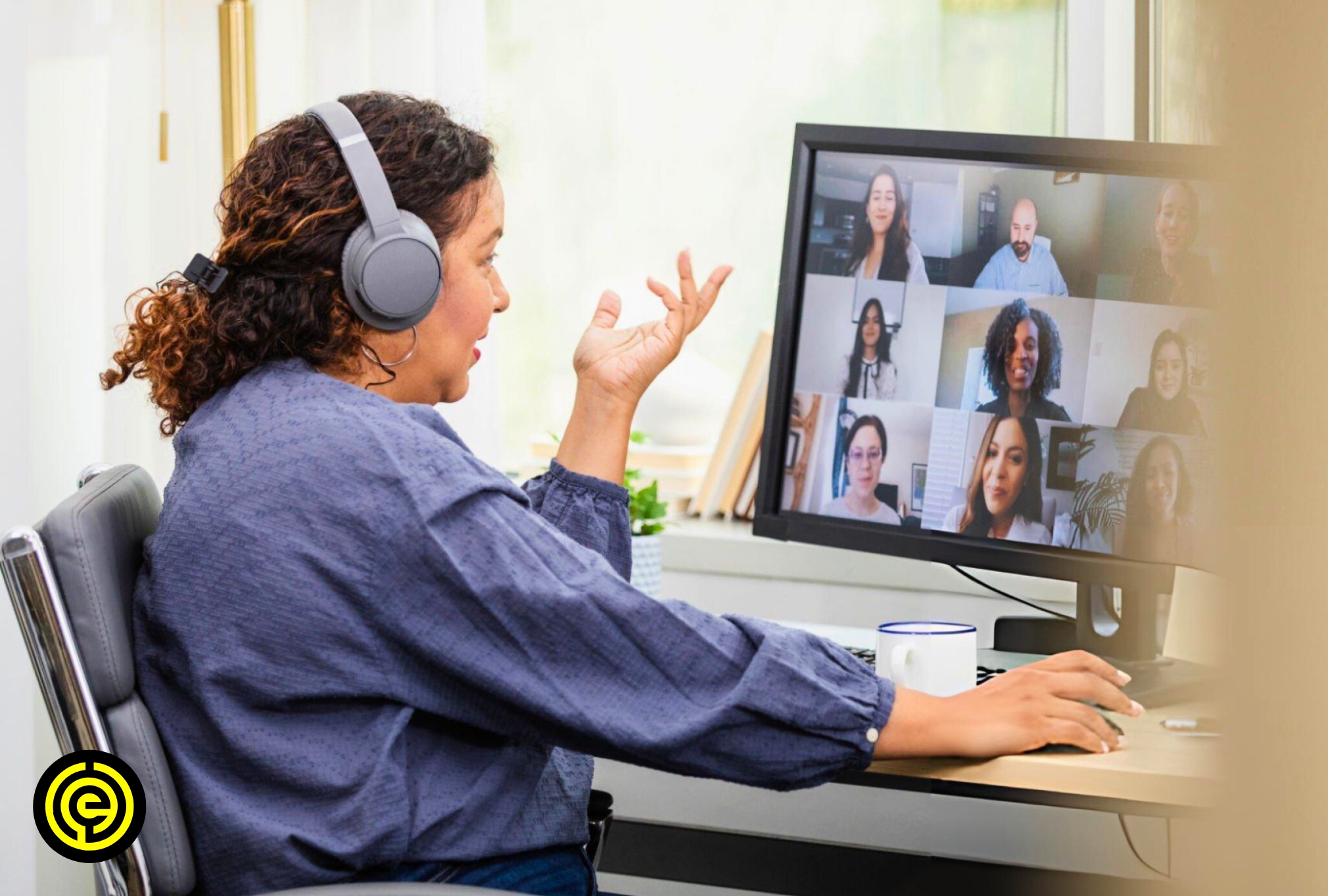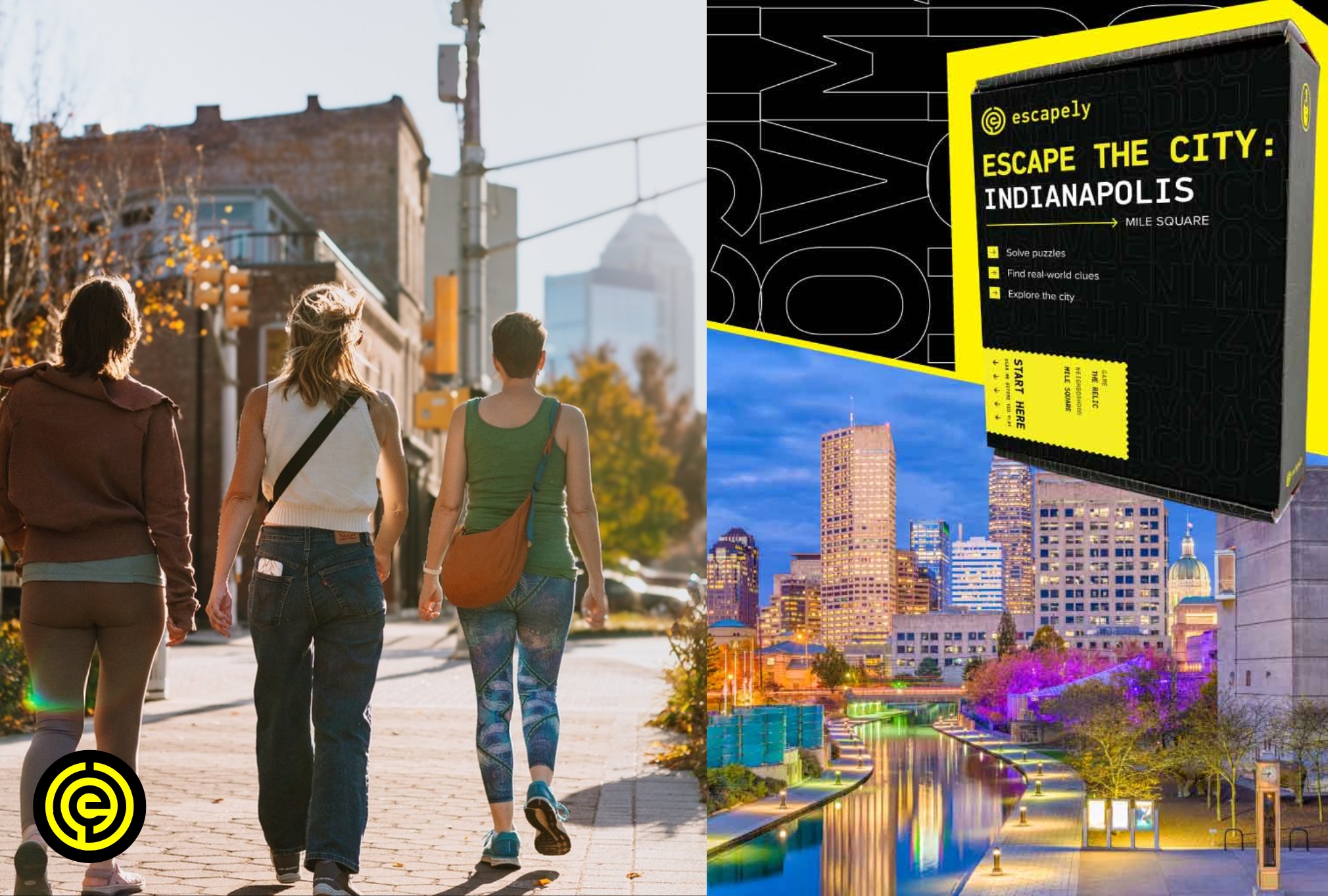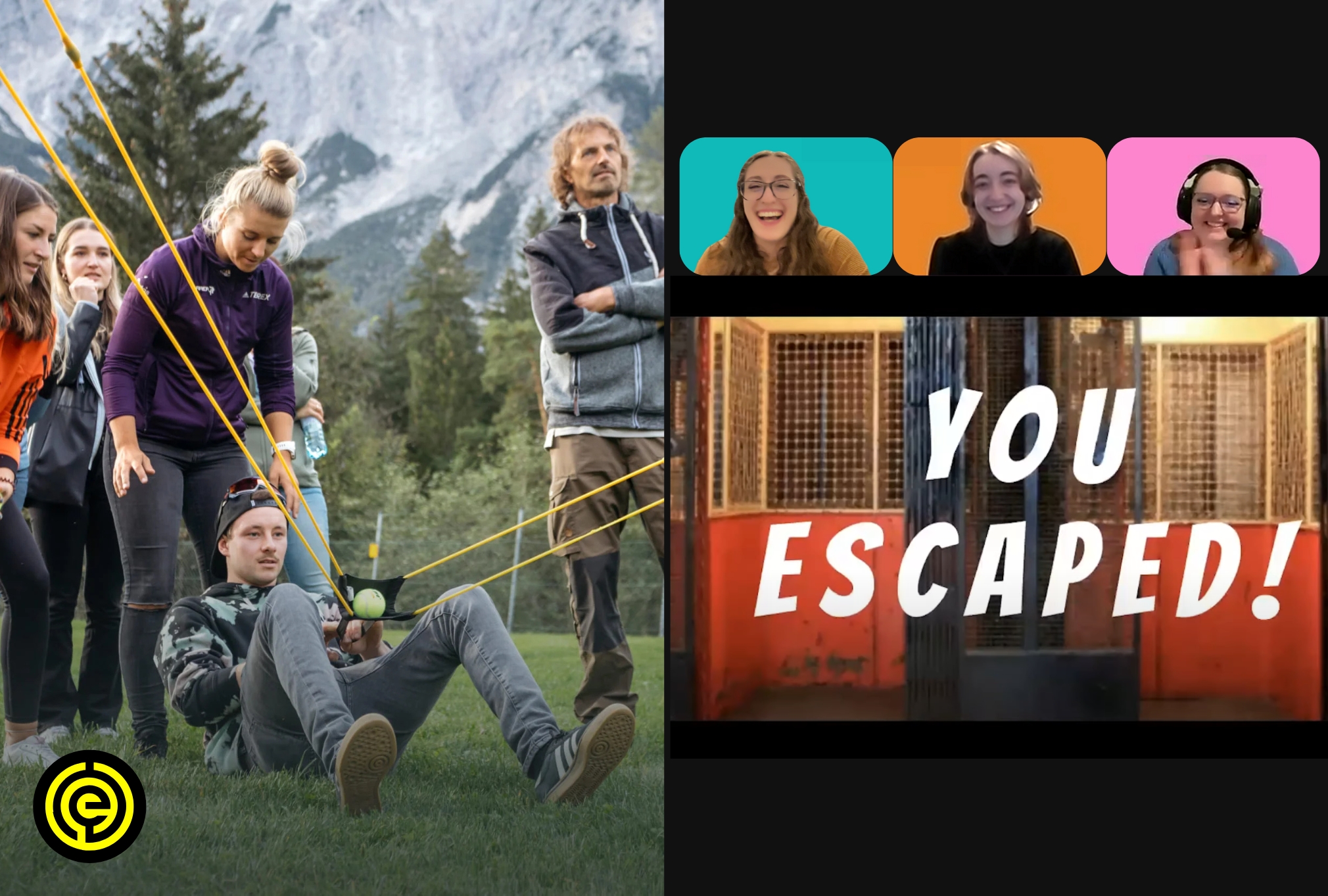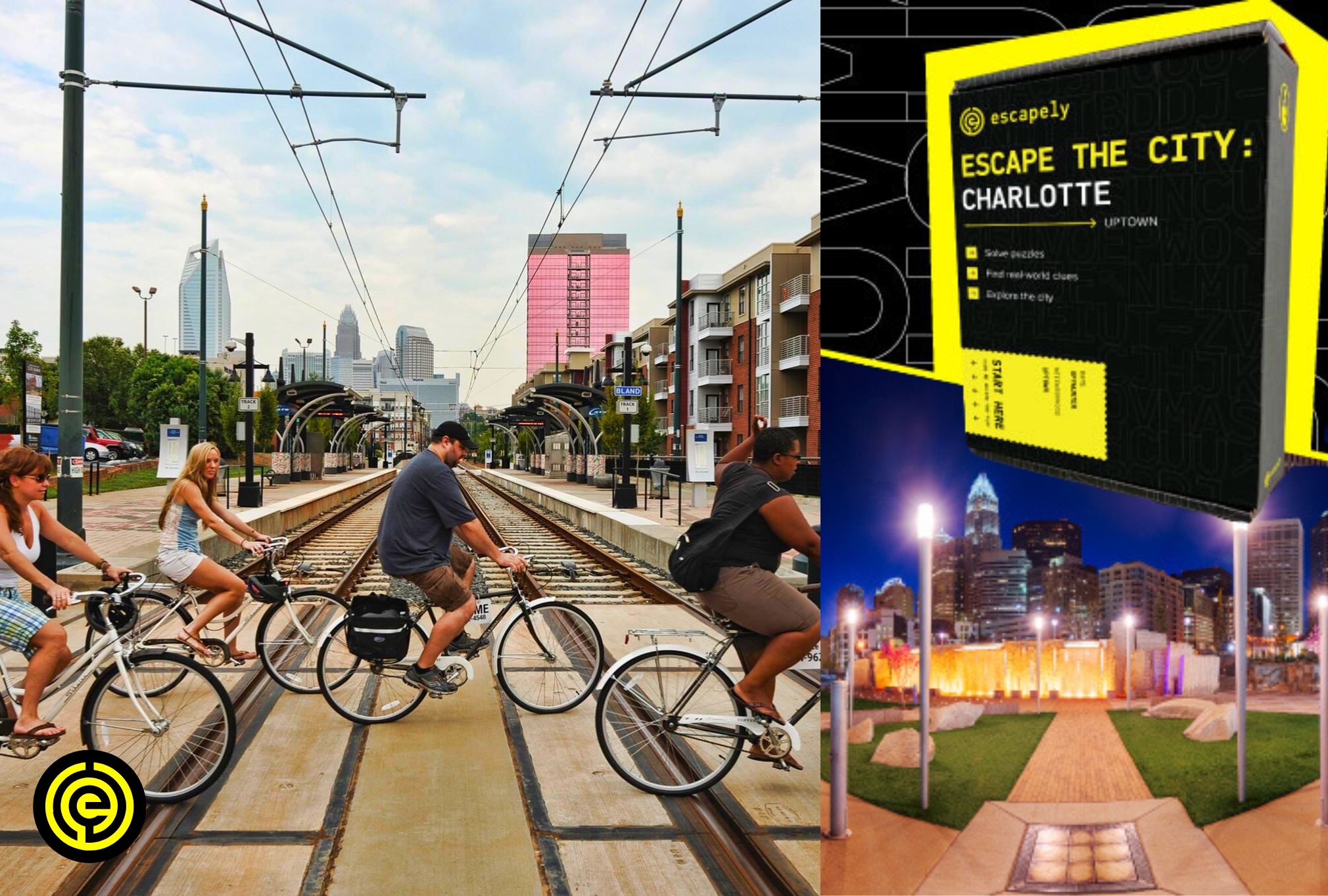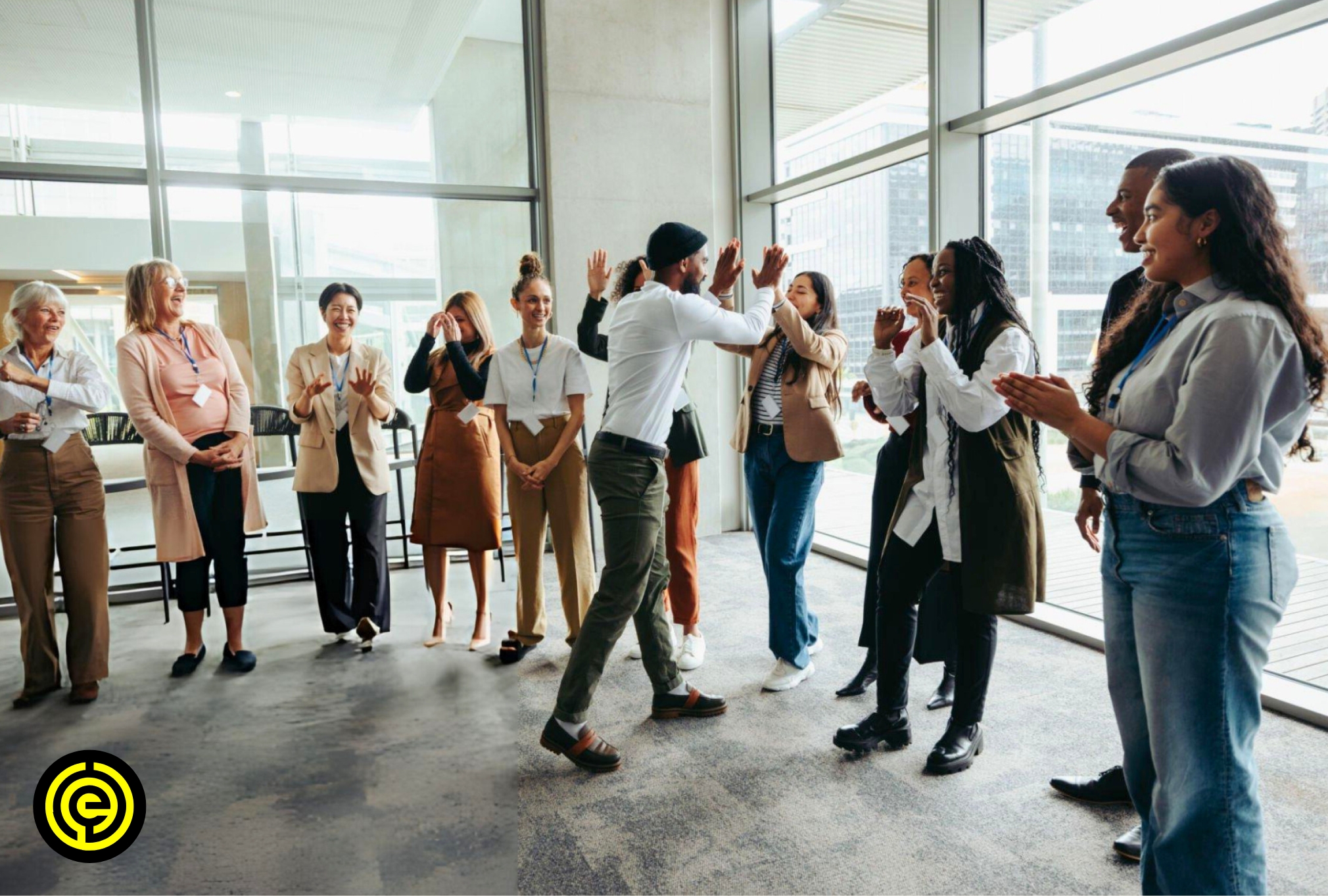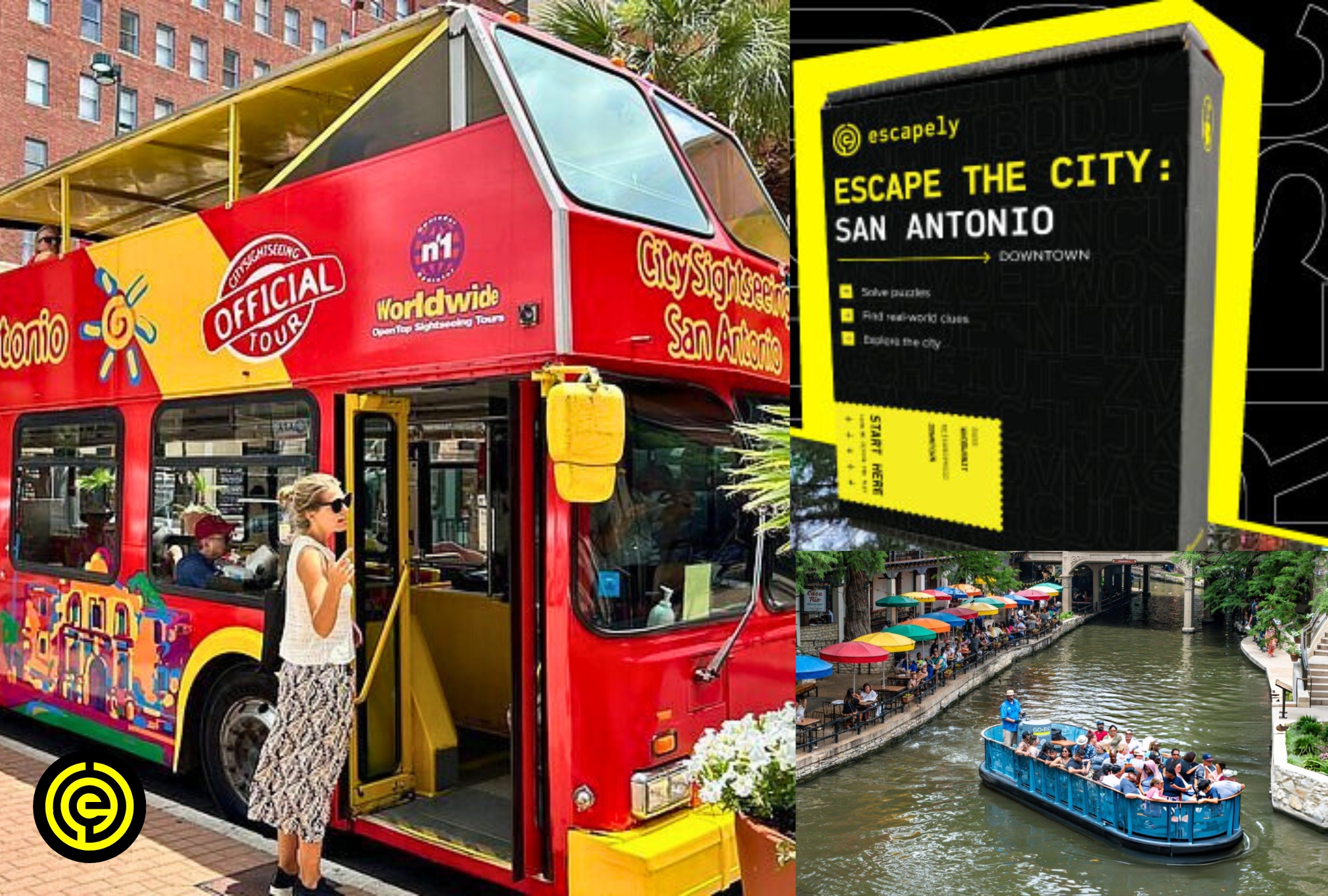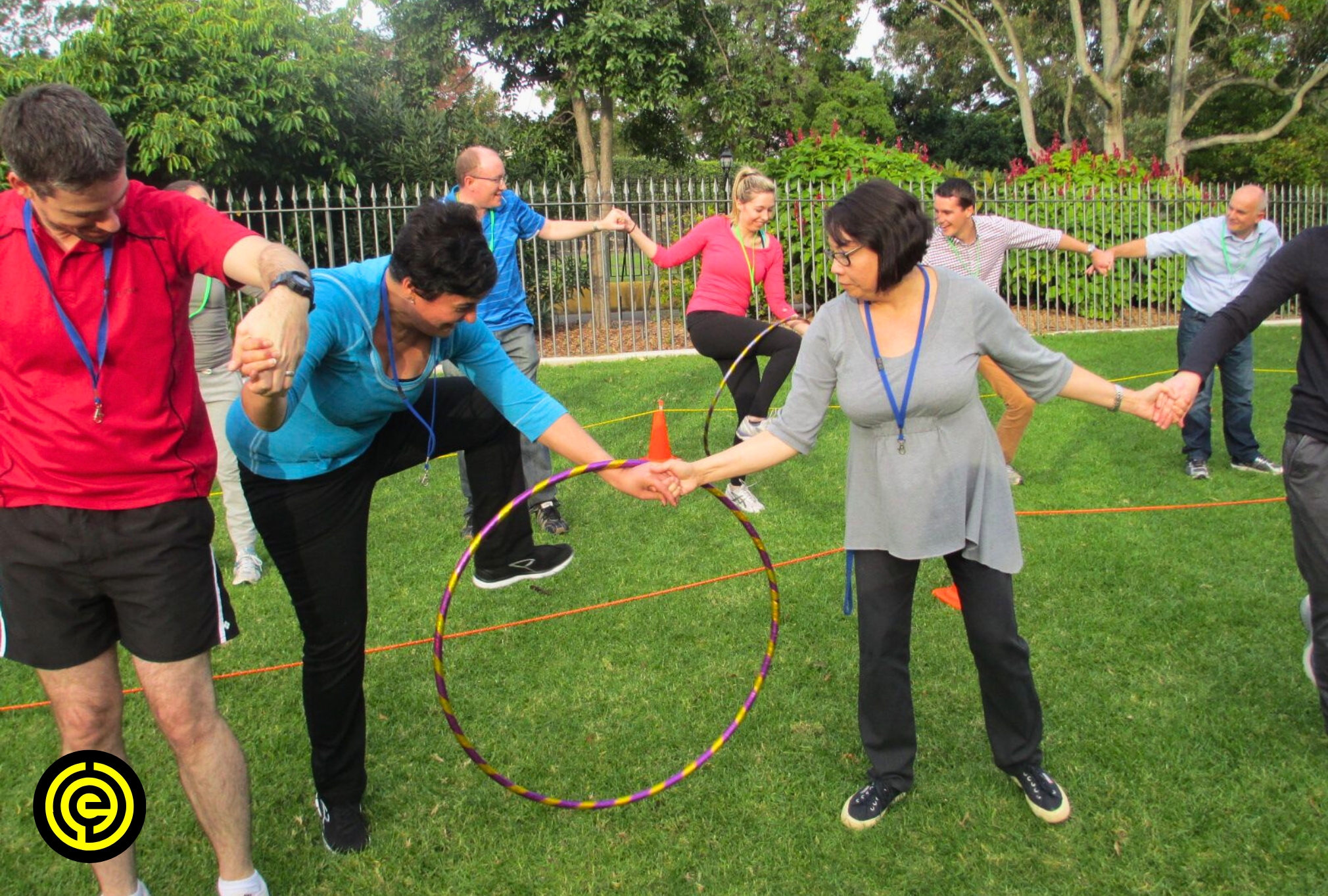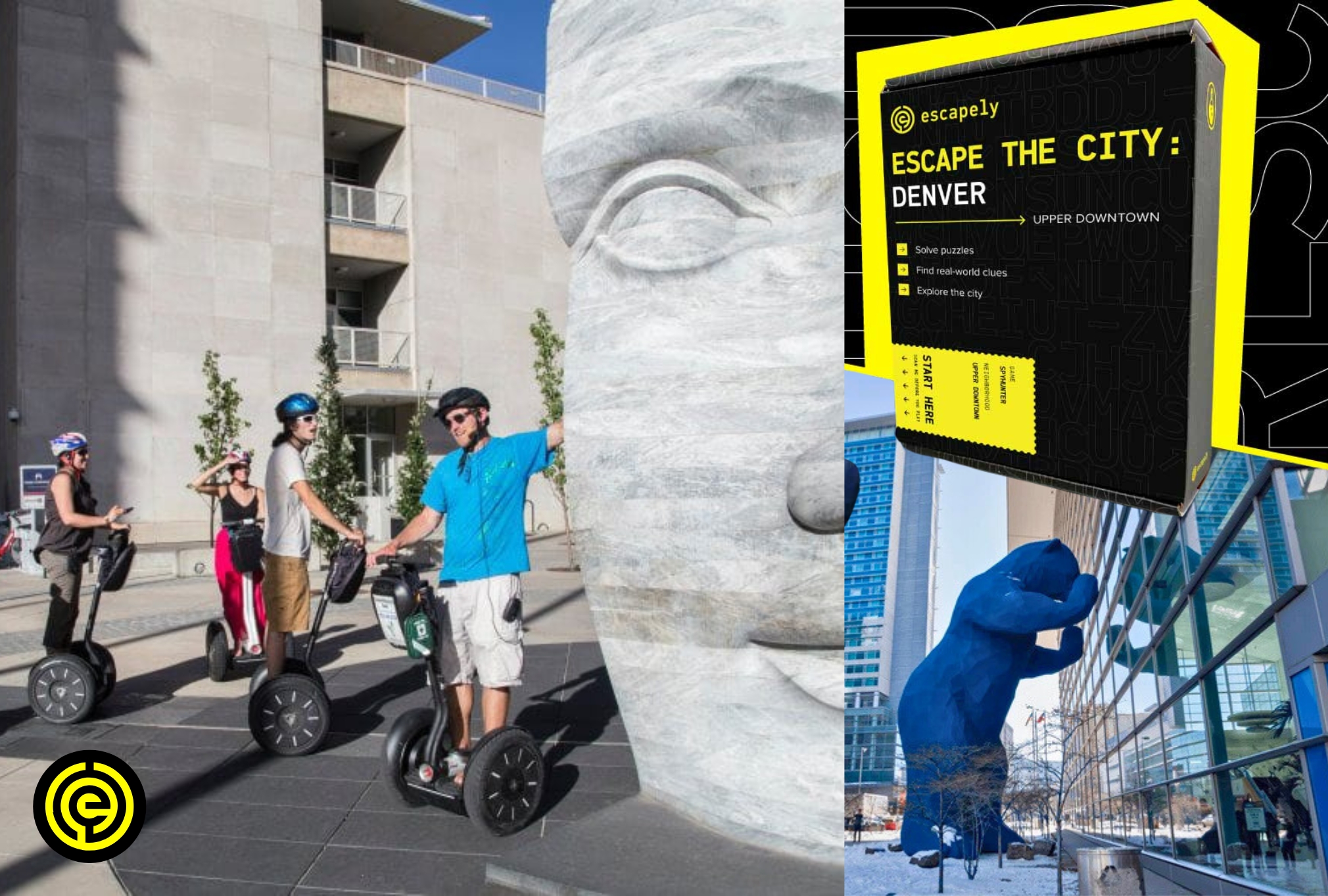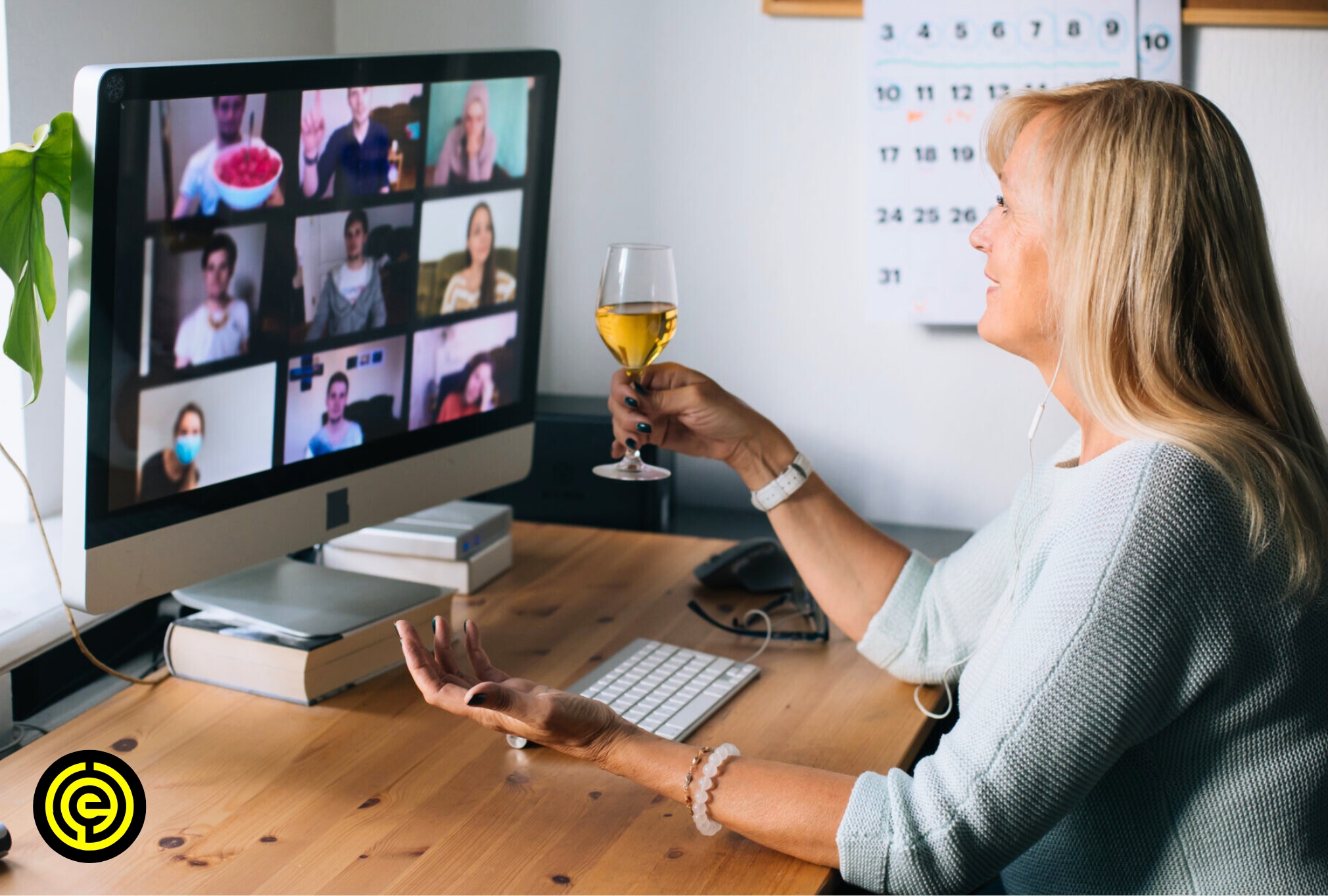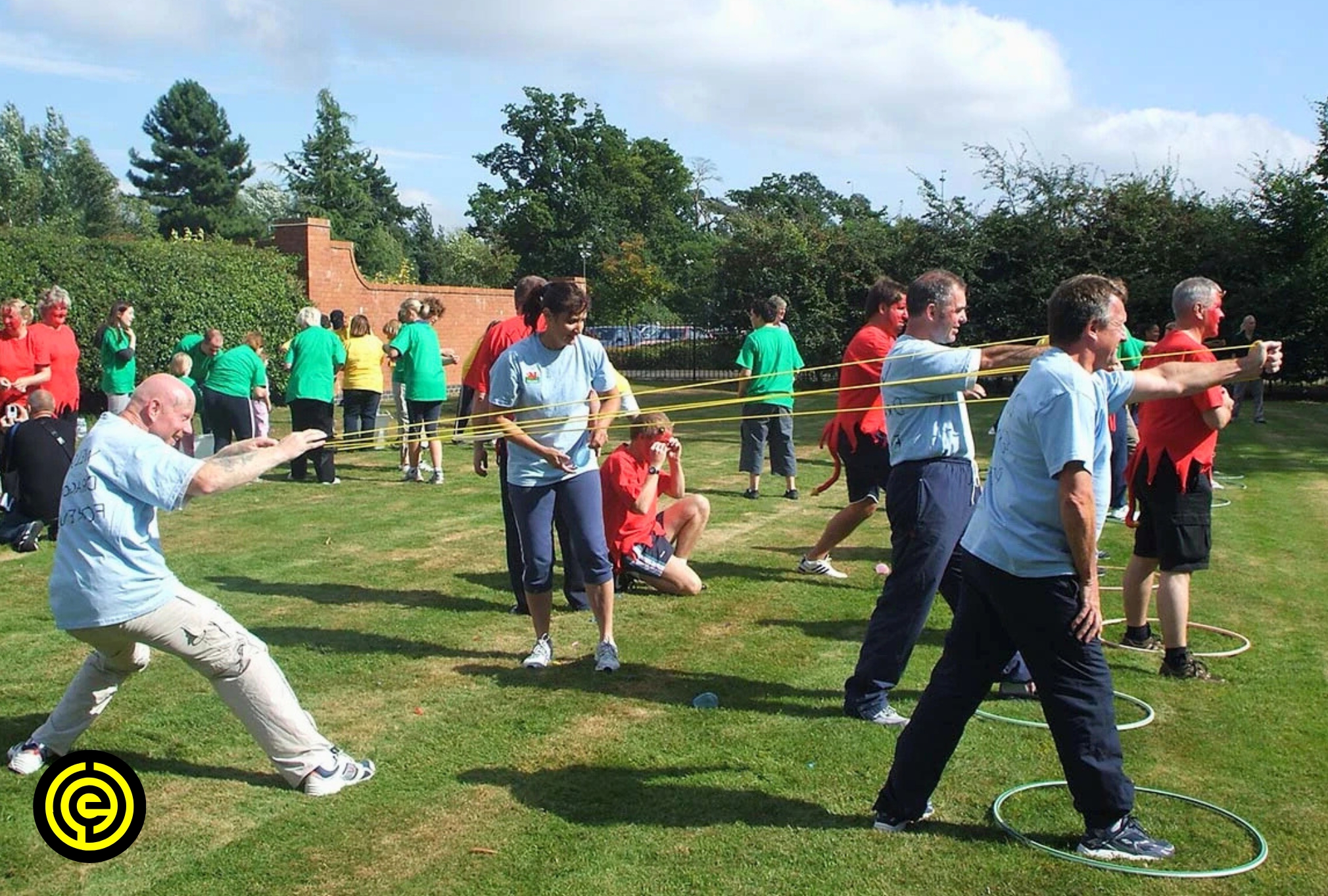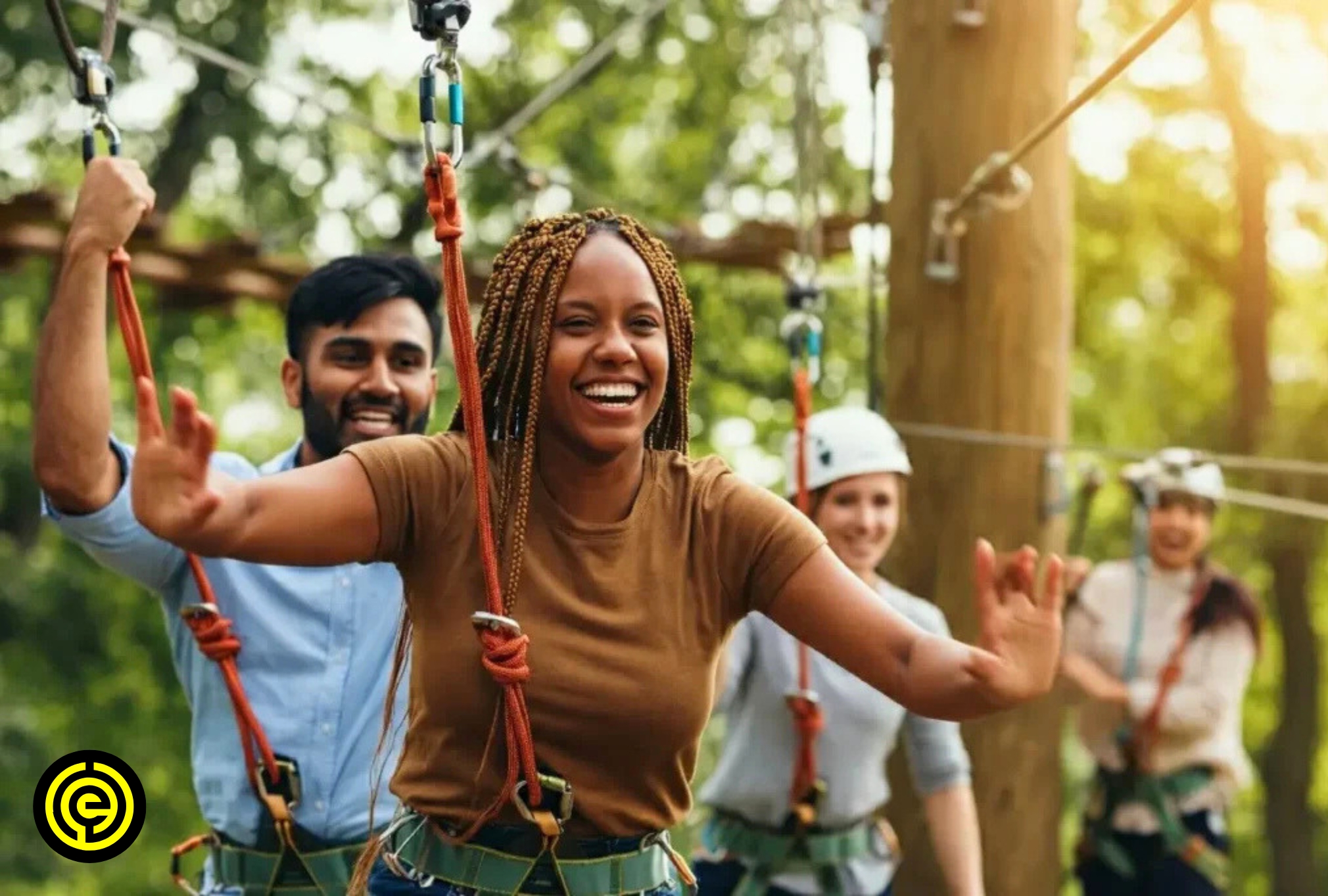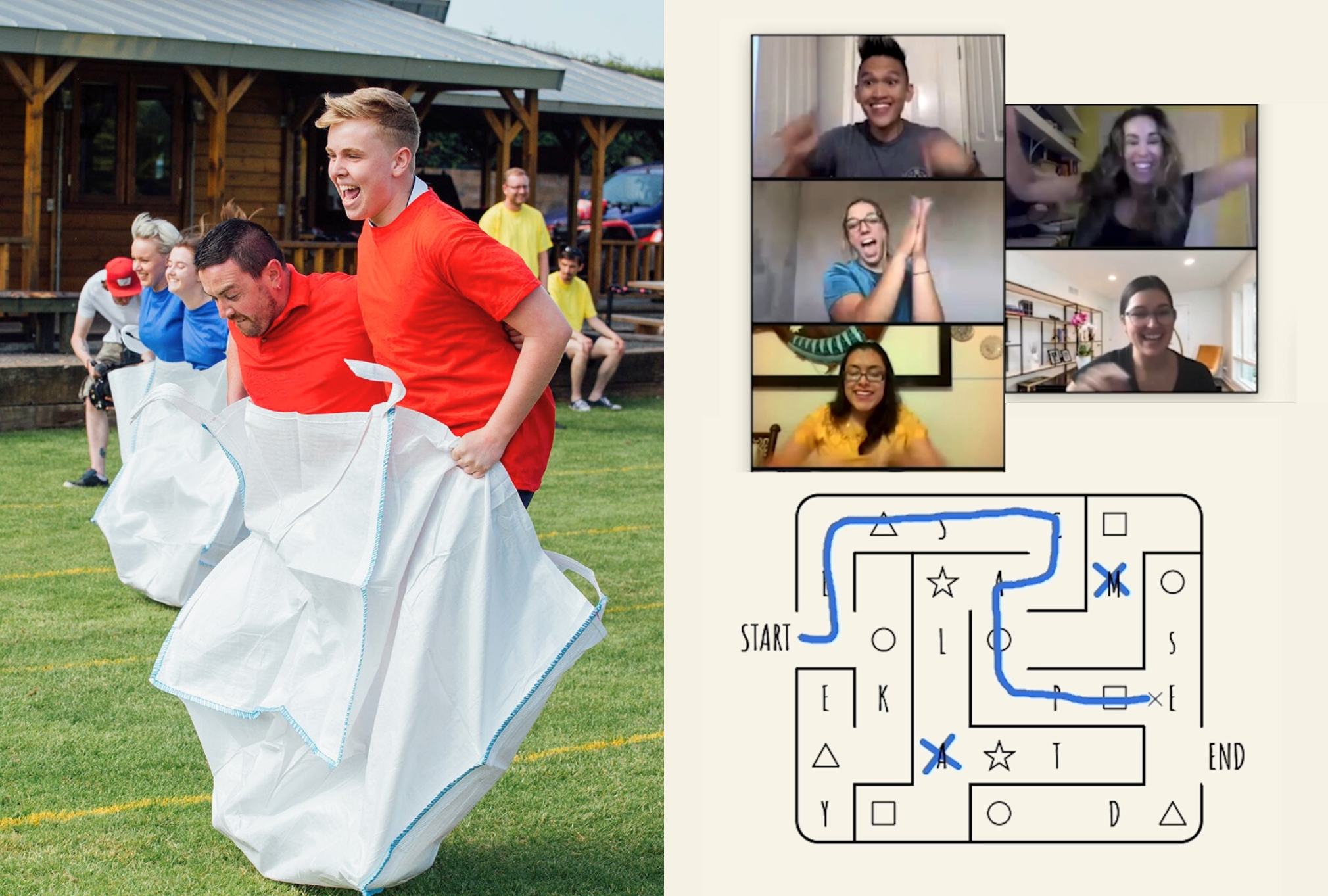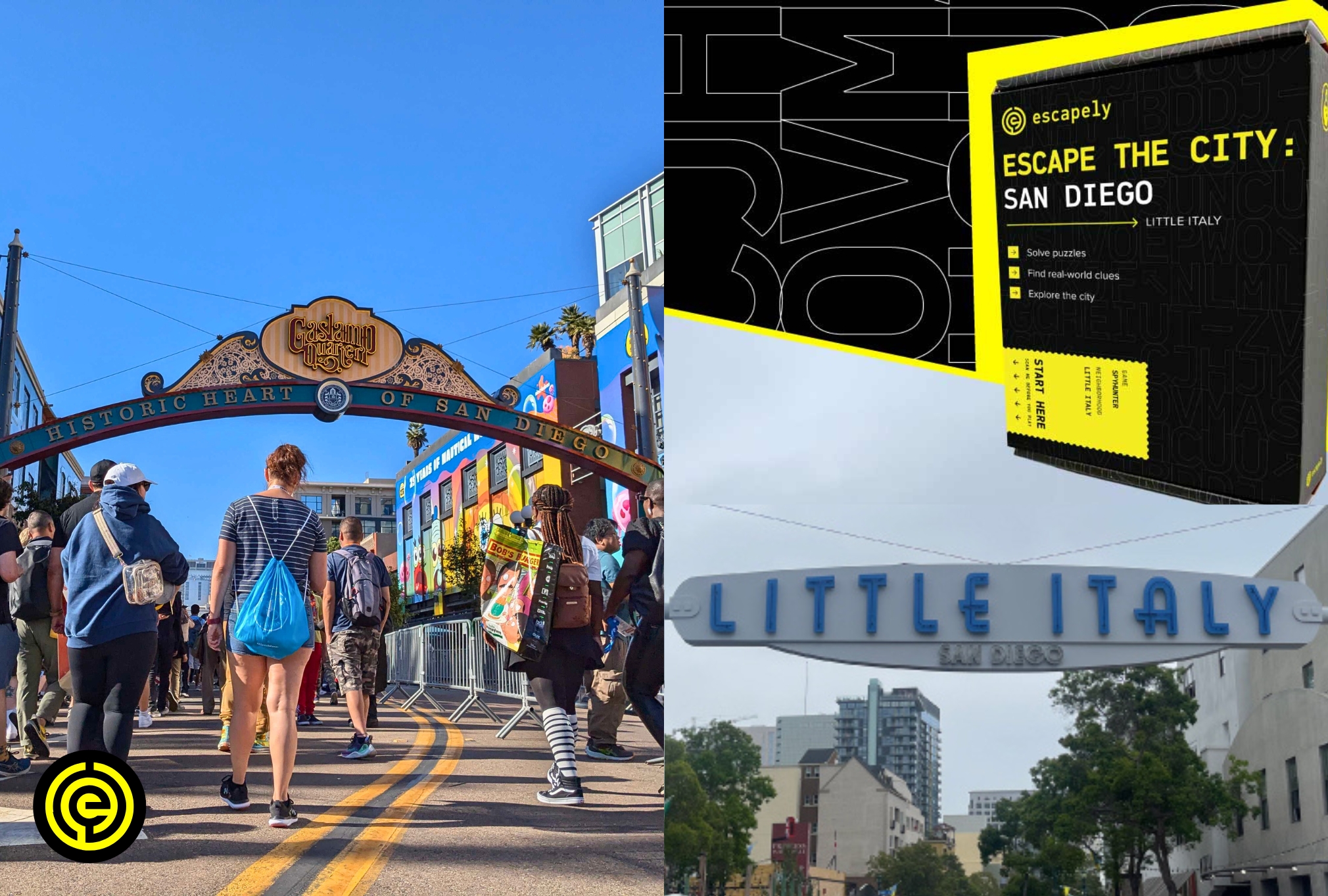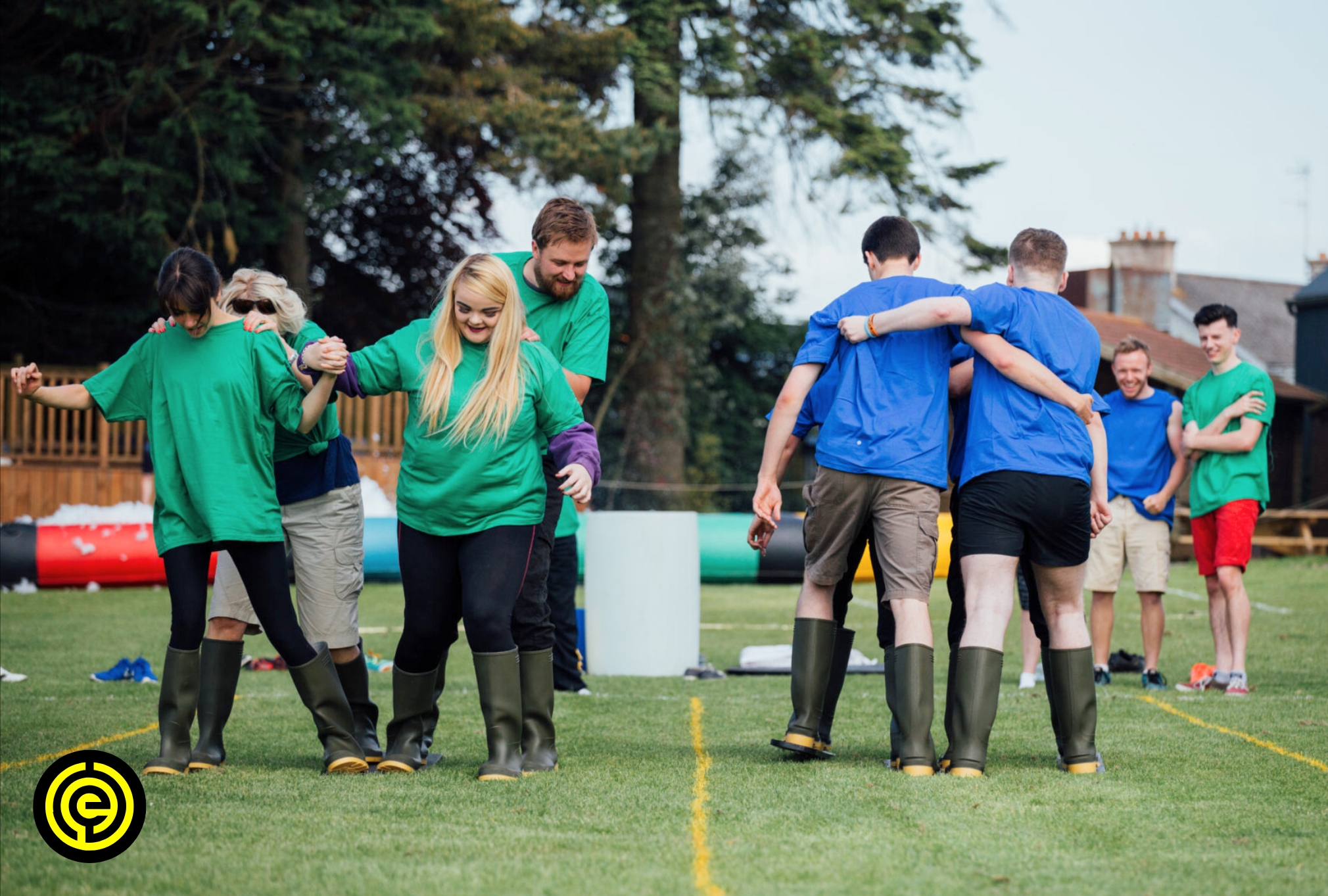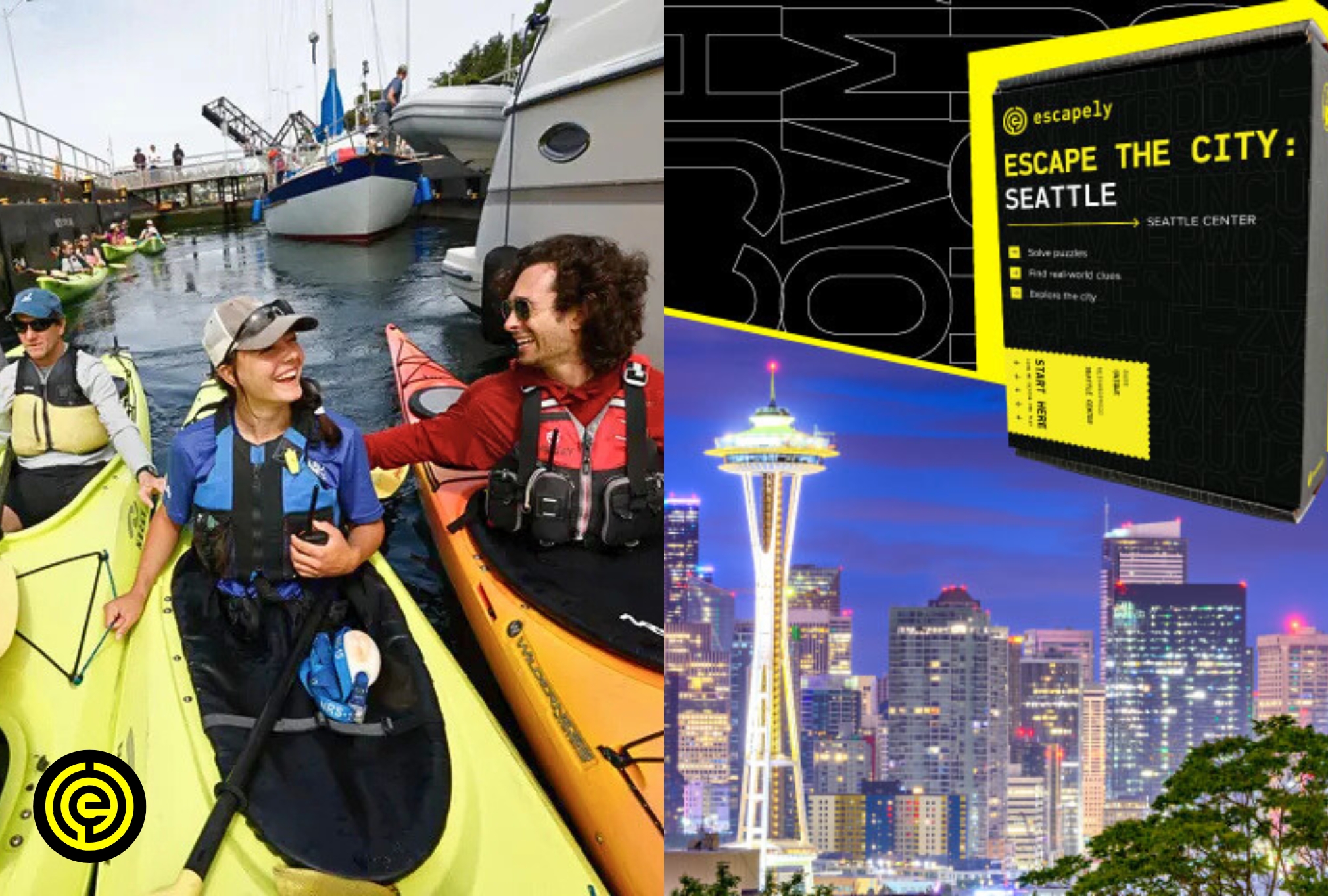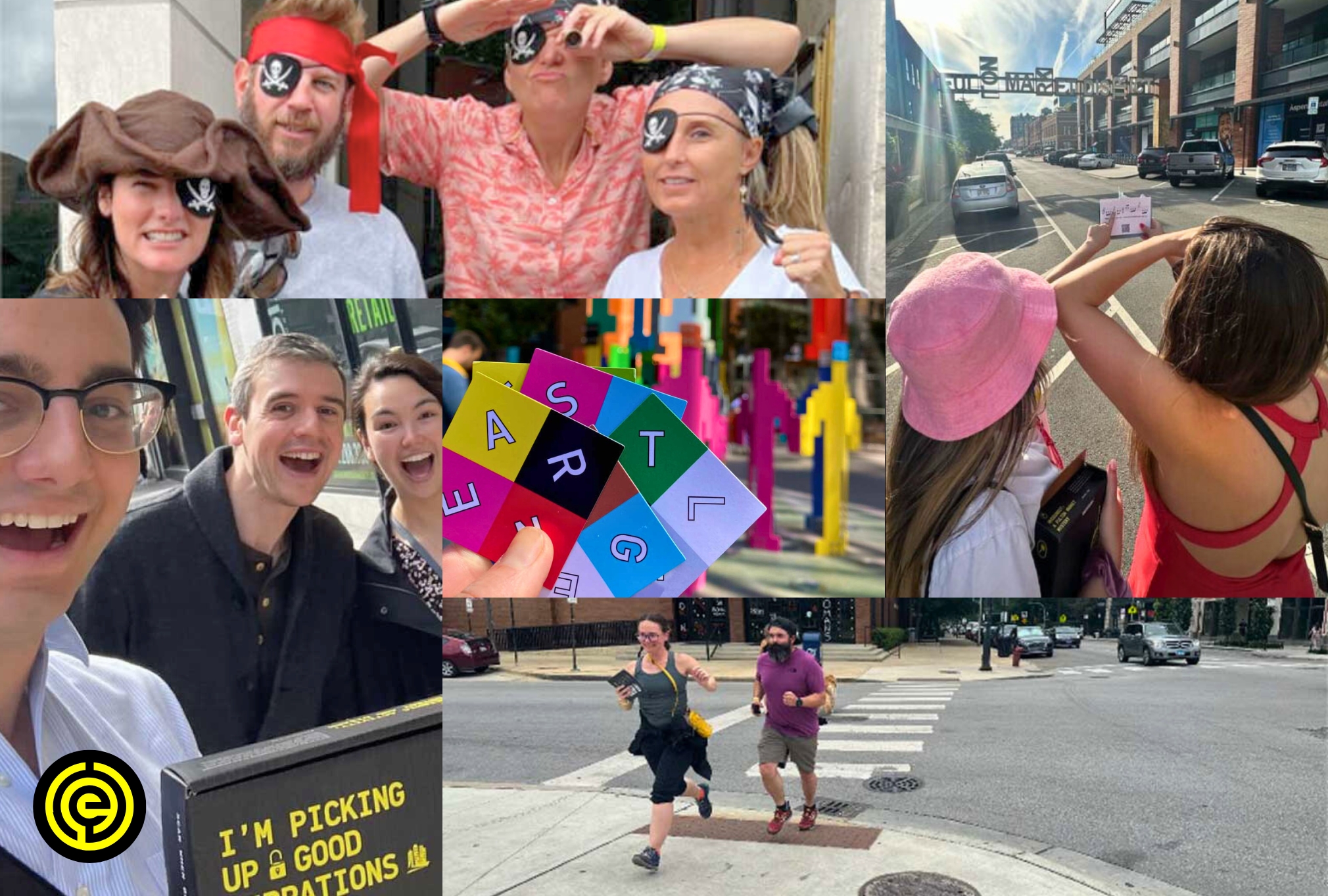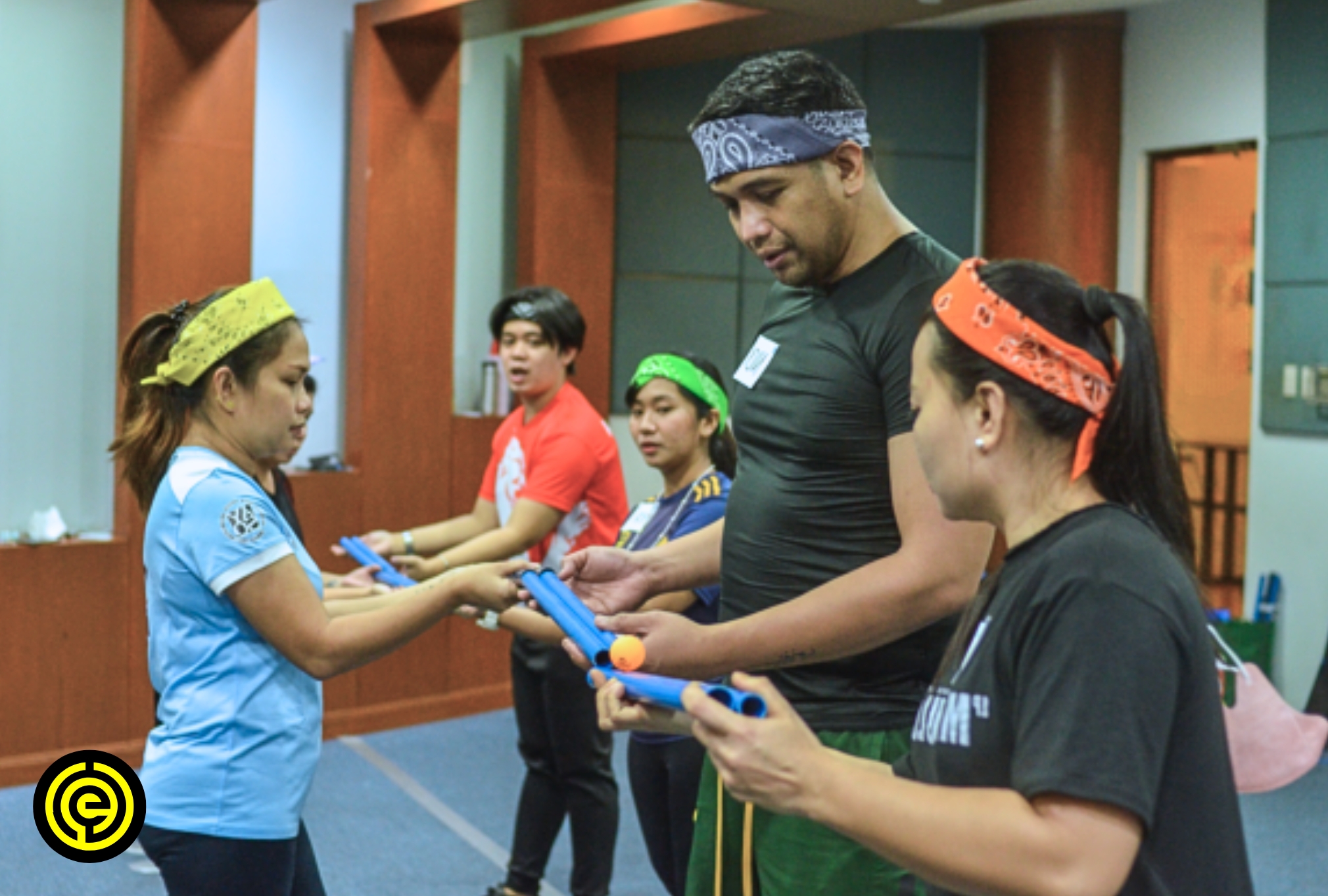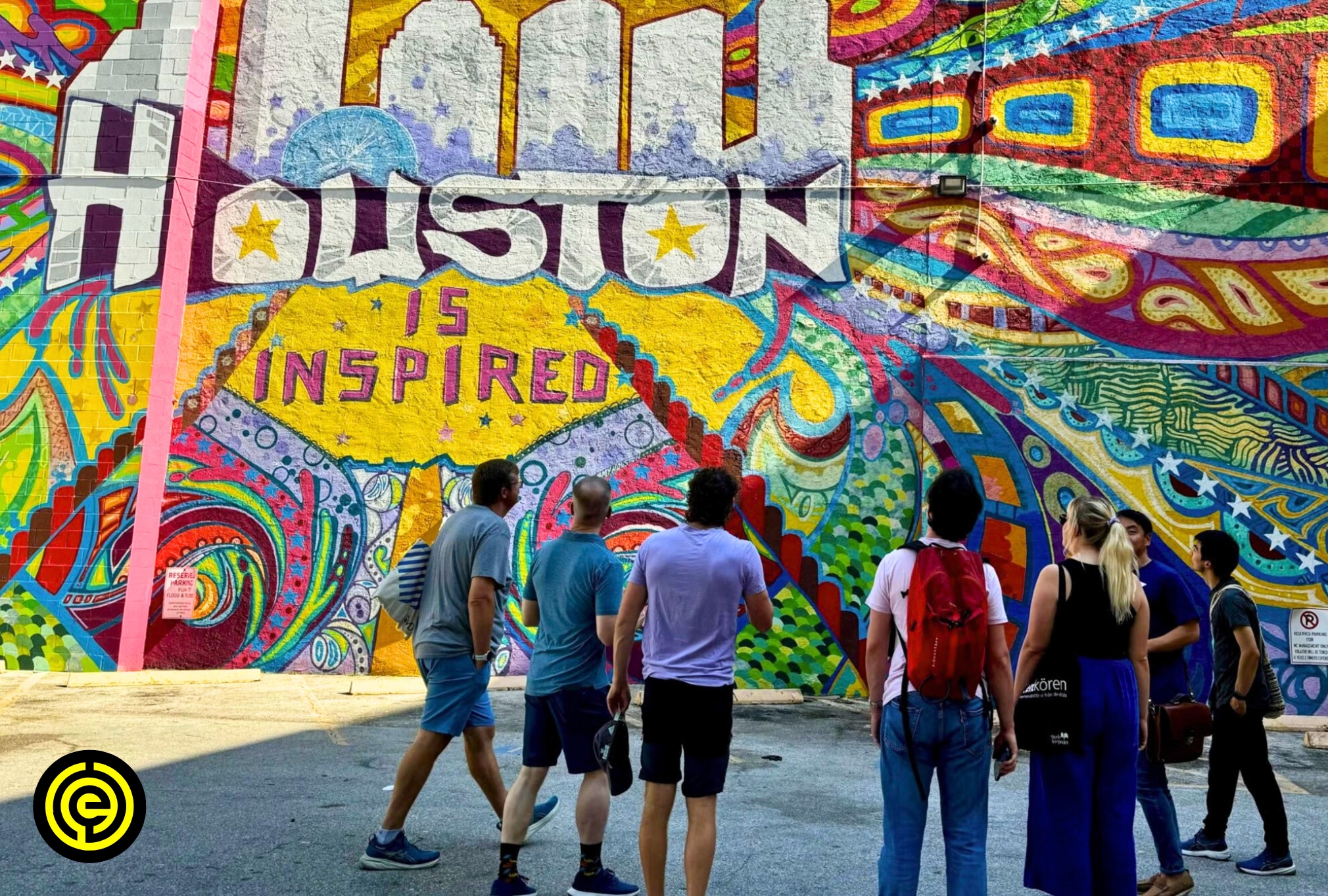Not every event feels welcoming to everyone—but it should.
If you want your team to feel connected and engaged, inclusivity is key. That means offering accessible materials, team building activities that everyone can participate in, diverse food options, and quiet spaces for those who need them.
Companies that practice these strategies see stronger team bonds and better results.
Ready to plan an inclusive event? Book a demo with Escapely to plan an activity where everyone feels included!
1. Choose Venues That Welcome Everyone
Finding the right venue is the first step to making your event truly inclusive. A space should be easy to navigate and welcoming to all attendees.
Look for venues that check the boxes below.
- Wheelchair-friendly access with ramps, elevators, and automatic doors
- Restrooms with grab bars and enough space for easy maneuvering
- Accessible parking and transportation options for all guests
- Quiet areas for neurodiverse attendees who need a break from crowds
2. Craft Communications Everyone Understands
If your attendees cannot access key details, they will likely feel excluded before the event even begins. Make sure your language is clear, concise, and inclusive.
Avoid jargon or overly complex wording that may confuse or alienate guests. Use gender-neutral language to ensure everyone feels acknowledged.
Providing materials in multiple formats—such as braille, large print, and digital versions—also ensures all attendees can access essential event information.
Additionally, all online content, including registration forms, event pages, and schedules, should be screen-reader-friendly so that visually impaired individuals can navigate easily.
Are you interested in experiencing a fun and unforgettable inclusive event? Book a demo with us to learn more about our team building offerings!
3. Serve Food That Caters to All Tastes
Food is not just fuel—it is a major part of the event experience. When food is inclusive, everyone feels valued and can focus on the event, not their plate.
Plan ahead to accommodate different dietary needs. Include vegan, vegetarian, halal, and kosher meal options so all attendees can enjoy their meal without worry.
Additionally, clearly label allergens like nuts, gluten, and dairy to help guests make safe choices.
If possible, set up separate food preparation areas to prevent cross-contamination for those with severe allergies.
4. Respect Cultural and Religious Practices
Culture and religion shape how people experience events, so being mindful of these aspects makes your event planning more inclusive.
Scheduling conflicts with major religious observances can limit participation, so check calendars before setting a date. If possible, provide prayer rooms or quiet spaces for those who need time for reflection.
Similarly, consider dietary restrictions to ensure all attendees have suitable meal options.
- Halal – Prepared according to Islamic dietary laws, avoiding pork and alcohol.
- Kosher – Follows Jewish dietary laws with specific preparation requirements.
- Vegetarian & Vegan – Avoids meat (vegetarian) or all animal products (vegan).
- Hindu and Jain – Many Hindus avoid beef, while Jains follow a strict vegetarian diet, avoiding root vegetables.
- Buddhist – Some Buddhists follow a vegetarian or plant-based diet, depending on tradition.
Also, if your event has a dress code, ensure it respects cultural and religious attire requirements.
5. Create Sensory-Friendly Environments
Some people thrive in high-energy settings, while others need a calmer space to stay engaged.
A sensory-friendly environment makes your event accessible to neurodiverse attendees, those with anxiety, and anyone sensitive to overstimulation.
Simple adjustments can enhance comfort for everyone. Here are some suggestions.
- Offer noise-canceling headphones and designate quiet areas for those who need a break from loud conversations or music.
- Use adjustable lighting and avoid flashing effects, which can overwhelm or even harm some guests.
- Providing both visual and audio formats for presentations ensures everyone can absorb information in a way that works best for them.
This strategy helps all attendees stay present, engaged, and comfortable.
Are you interested in experiencing a fun and unforgettable inclusive event? Book a demo with us to learn more about our team building offerings!
6. Involve Diverse Voices in Planning
A genuinely inclusive event does not just accommodate diversity—it embraces it from the start. One way to ensure the success of your event is by incorporating different perspectives into event planning.
Here’s how to achieve this feat:
- Consult individuals from various backgrounds to identify potential gaps in accessibility, representation, equity, and cultural sensitivity. Forming an inclusivity advisory panel allows for ongoing feedback and improvements so that your event remains welcoming.
- Regularly assess and update inclusivity policies to adapt to changing needs and expectations.
When diverse voices shape an event, the result is an experience where everyone feels seen, heard, and valued.
7. Simplify Registration for All
Registration should be quick, simple, and accessible for everyone. A complicated or inaccessible process can discourage potential participants from signing up.
Make it easy by using clear, easy-to-read fonts and ensuring all forms are screen-reader friendly so visually impaired guests can navigate them without issues.
In addition, offer multiple ways to register (such as online, by phone, or in person) so attendees can choose what works best for them.
Finally, allow attendees to request accommodations in advance so their needs are met from the start.
When registration is smooth and inclusive, participation increases, and the event becomes more welcoming.
8. Train Your Team on Inclusivity
Staff and volunteers need to understand inclusion and accessibility to create a welcoming experience for all attendees.
Here are some effective training ideas to build an inclusive team.
- Disability Awareness Workshops – Teach staff how to assist guests with mobility, vision, and hearing impairments.
- Empathy Training – Use real-world scenarios to help team members understand the challenges faced by diverse attendees.
- Cultural Competency Training – Educate your team on different cultural practices, including greetings, customs, and communication styles.
- Inclusive Language Training – Train staff to use gender-neutral and respectful language when interacting with guests.
- Accessibility Best Practices – Show staff how to navigate the venue and assist guests who need accommodations.
- Role-Playing Exercises – Help employees practice real-time problem-solving for potential inclusivity challenges.
Assigning an accessibility coordinator ensures that any last-minute concerns are handled efficiently.
9. Gather Feedback to Improve
No event is perfect, but feedback helps you get closer. The best way to create truly inclusive events is to listen to the people attending them.
After your event, send out surveys that specifically ask about accessibility and inclusivity. Keep them short, clear, and easy to complete so attendees are more likely to respond.
Offer anonymous feedback channels to encourage honest insights from those who may not feel comfortable sharing concerns openly.
Once you have gathered responses, use the data to refine your event planning strategies. Identify patterns in feedback, adjust where necessary, and keep improving.
Remember, inclusion is not a one-time effort—it is an ongoing process that gets better with each event.
10. Use Inclusive Event Marketing Strategies
Your event marketing should reflect the diversity of your attendees and make everyone feel welcome before they even step through the door.
Representation matters, so showcase people from different backgrounds in your promotional materials.
Additionally, make event information accessible by offering content in multiple languages and using clear, inclusive language.
Also, if possible, ensure your materials—whether flyers, social media posts, images, or videos—are accessible to those with visual or hearing impairments. This includes providing alt text for images, captions for videos, and easy-to-read fonts.
An inclusive marketing approach expands your reach, boosts engagement, and ensures everyone feels like they belong at your event.
Are you interested in experiencing a fun and unforgettable inclusive event? Book a demo with us to learn more about our team building offerings!
11. Anticipate and Overcome Challenges
Budget constraints and venue limitations should not prevent accessibility.
Instead, get creative with cost-effective solutions like offering digital materials instead of printed ones and choosing venues that already include ramps, elevators, and accessible restrooms to reduce modification costs.
Have a backup plan for last-minute accommodations, such as renting assistive devices or rearranging seating to create a more inclusive space.
Planning events means thinking ahead. That is why being flexible and prepared ensures that all attendees can engage fully, regardless of challenges.
12. Leverage Technology for Accessibility
Technology plays a crucial role in making inclusive events accessible to all. It bridges gaps, removes barriers, and makes sure every attendee can fully participate.
This is especially important for hybrid and virtual team-building events, where remote attendees should have the same engaging experience as those in person.
Here are key hybrid and virtual participation tools to support and enhance event accessibility.
- Live-streaming with real-time captions – Allows remote attendees to follow along effortlessly.
- Interactive chat and Q&A platforms – This is a great way to invite participants to engage more actively in discussions, ask questions, and share insights in real-time.
- Breakout rooms – Create smaller discussion groups for deeper engagement during virtual team-building activities.
- AI-powered speech-to-text tools – Helps make content accessible to those with hearing impairments.
- Multi-platform accessibility – Ensures event content is available on desktops, mobile devices, and tablets for flexibility.
By leveraging these tools, you create an event where every guest—in-person or remote—feels included, engaged, and able to participate in a way that suits them best.
Host Inclusive Team-Building Events with Escapely
Team building activities are supposed to bring people together. But sometimes, they miss the mark.
You have probably seen it—some people are engaged, others are just… there. We get it. Creating an event where everyone genuinely feels included is not always easy.
This is where our expertise truly shines. We excel in designing inclusive team-building experiences, whether in-person or virtual.
Curious to see how we do it? Contact Escapely to explore our innovative approach to team-building!
FAQs About Inclusive Events
What are common mistakes when planning an inclusive event?
Mistakes include choosing inaccessible venues, overlooking dietary needs, and failing to provide accessible materials. Avoid these by prioritizing accessibility from the start.
How can I measure the success of an inclusive event?
Success is measured through attendee feedback, engagement levels, and the number of accommodations requested and fulfilled. Post-event surveys can provide valuable insights.
What budget-friendly ways can I make an event more inclusive?
Making an event inclusive does not have to be expensive.
Your team could use digital resources instead of printed ones, train volunteers on accessibility, and choose venues that already have ramps, elevators, and adaptive seating.
Are you interested in experiencing a fun and unforgettable inclusive event? Book a demo with us to learn more about our team building offerings!

